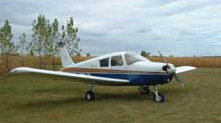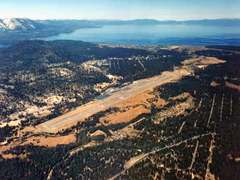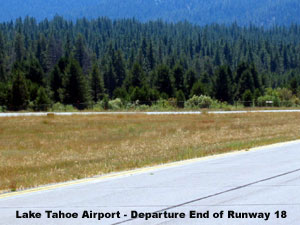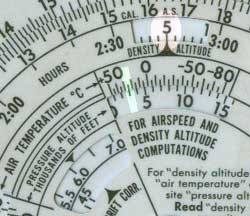 “I really don’t like the idea of you taking this plane to Tahoe,” said the owner of the FBO who had just checked me out in the school’s Cherokee 140. I gave him reassurances that I was a very safe and competent pilot and, in fact, I had even flown in and out of the 6200 foot elevation airport in a Cessna 150. I was surprised at how unimpressed he was with this. I doubt the fact that I was a little over 17 years old with less than a 100 flying hours had anything do with his attitude. Nonetheless he allowed me to go, but repeated his mantra of disapproval.
“I really don’t like the idea of you taking this plane to Tahoe,” said the owner of the FBO who had just checked me out in the school’s Cherokee 140. I gave him reassurances that I was a very safe and competent pilot and, in fact, I had even flown in and out of the 6200 foot elevation airport in a Cessna 150. I was surprised at how unimpressed he was with this. I doubt the fact that I was a little over 17 years old with less than a 100 flying hours had anything do with his attitude. Nonetheless he allowed me to go, but repeated his mantra of disapproval.
The real problem at the time was that I couldn’t afford to rent anything more substantial and I was overly comforted by the operating handbook’s performance figures even with three passengers on board. All I had to do was apply the proper procedures for a density altitude environment and the Cherokee 140 would do the job. I knew the drill. Keep the weight down, the outside air temperature cool, the mixture properly leaned and away we’d go according to the performance figures. As these figures came directly from a genuine Piper factory manual they must be true, right?
 In fact, it was a flawless flight up to South Lake Tahoe and my buddies really enjoyed it. Keeping the plane light for taking-off the next day was not a problem. As teens, we were pretty lean and we did not take any luggage with us other than an overnight toiletry kit. The fuel burn off on the way up would also help. We spent the night in Tahoe and had a good old time as only teenage kids can. The next morning, much to my consternation, we got back to the airport later than I had planned.
In fact, it was a flawless flight up to South Lake Tahoe and my buddies really enjoyed it. Keeping the plane light for taking-off the next day was not a problem. As teens, we were pretty lean and we did not take any luggage with us other than an overnight toiletry kit. The fuel burn off on the way up would also help. We spent the night in Tahoe and had a good old time as only teenage kids can. The next morning, much to my consternation, we got back to the airport later than I had planned.
I had wanted to takeoff at 7 a.m., but it was now three hours later and the outside air temperature had climbed to the low 70’s giving me a density altitude of around 8000 feet. To make matters worse, I had hoped to take off towards the lake, but the winds were out of the south, which meant that I now had to take off towards the trees. My well-intentioned game plan was falling apart. Still, according to the book, I should be airborne about halfway down the 7000-foot runway.
 I ran the engine up and leaned for best power. The aircraft’s lack of acceleration was notable. Did I leave the parking brake on? We slowly reached flying speed and lifted off after a 3000-foot take-off roll. The problem now was that we were flying in ground effect and the plane did not want to climb. Passing the end of the runway, the tree line was rapidly approaching. I was able to nurse out just enough lift to barely clear the trees. I remember having all too clear a view of the individual tree branches passing below my wings. An intermittent stall warning horn was playing in the background. I think it was trying to play “Taps.”
I ran the engine up and leaned for best power. The aircraft’s lack of acceleration was notable. Did I leave the parking brake on? We slowly reached flying speed and lifted off after a 3000-foot take-off roll. The problem now was that we were flying in ground effect and the plane did not want to climb. Passing the end of the runway, the tree line was rapidly approaching. I was able to nurse out just enough lift to barely clear the trees. I remember having all too clear a view of the individual tree branches passing below my wings. An intermittent stall warning horn was playing in the background. I think it was trying to play “Taps.”
The one thing I did right was to maintain flying speed and not let the plane stall, but not getting us all killed was more luck than skill. I was able to gingerly turn the plane towards the lake where I could leisurely circle for altitude for the ride home. Both my passengers and myself were pretty shaken by what I still consider to be my closest call in over 35 years of flying.
 This may seem like a story about a density altitude encounter, and to a certain extent it is, but in an understated way it is more about how an accident, or in my case a near-accident, is never the result of one single mistake or circumstance. In accident investigation we call this the “causal chain.” This is when a series of independent events start to link together and pave a path for the accident that is yet to come. The problem is that these connected links are easier identified after an accident has occurred. It is the savvy pilot who can recognize the potential links early on and take the necessary corrective action to keep an accident chain from forming.
This may seem like a story about a density altitude encounter, and to a certain extent it is, but in an understated way it is more about how an accident, or in my case a near-accident, is never the result of one single mistake or circumstance. In accident investigation we call this the “causal chain.” This is when a series of independent events start to link together and pave a path for the accident that is yet to come. The problem is that these connected links are easier identified after an accident has occurred. It is the savvy pilot who can recognize the potential links early on and take the necessary corrective action to keep an accident chain from forming.
In my story it is pretty easy to see the chain being forged link by link. An inexperienced, pilot, an underpowered airplane, a delayed departure, and having to take off towards obstructions all in a density altitude environment. How about the FBO owner who said, “I really don’t like the idea of you taking this plane to Tahoe.” By knowing the risks he became the first link and could have stopped the chain from forming altogether had he given a more appropriate response such as, “I’d rather give a loaded firearm to a drunken chimp then let you take this plane to Tahoe.”
We can’t change history or control everything we would like to, but we can recognize when subtle and sometimes innocuous circumstances start to conspire to do us great harm. The trick is to acknowledge the circumstances, recognize the path being formed and break the chain before it breaks you. I was lucky. I came up one link short of disaster those many years ago.
Editor’s Note: This article was written by Ken Steiner prior to his retirement from the United States Aircraft Insurance Group as a Vice-President and Claims Manager. During his career, Ken investigated thousands of aircraft accidents involving small planes, crop dusters, helicopters, corporate aircraft, and airliners. He has been on-site at over 100 fatal aircraft accident investigations. He is currently an Aviation Investigative Consultant and is also a Pilot and Tactical Flight Officer for the San Mateo County Sheriff’s Air Support Unit. He owns a Cessna 182 based at San Carlos and holds ATP and CFI certificates with over 5000 flying hours.



